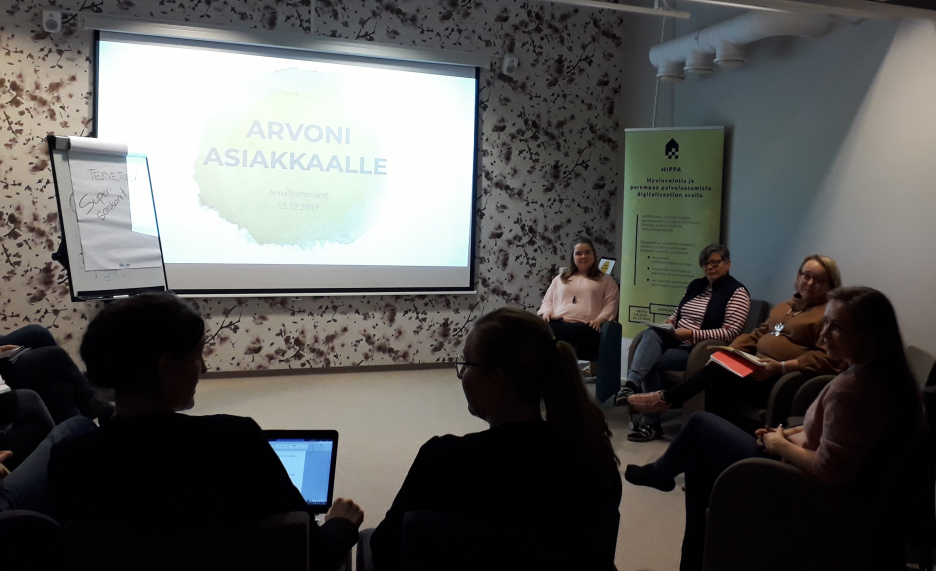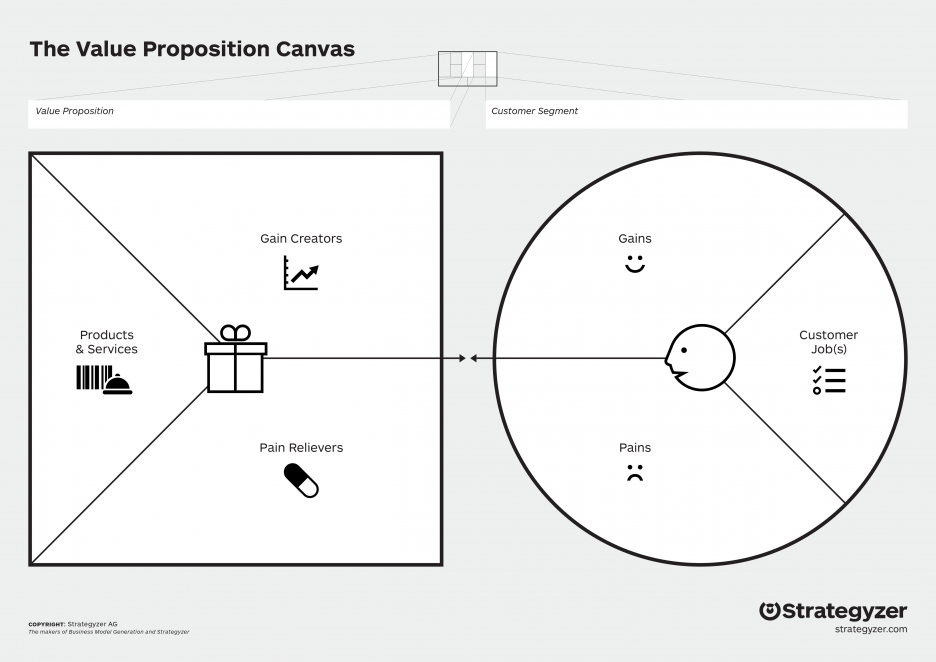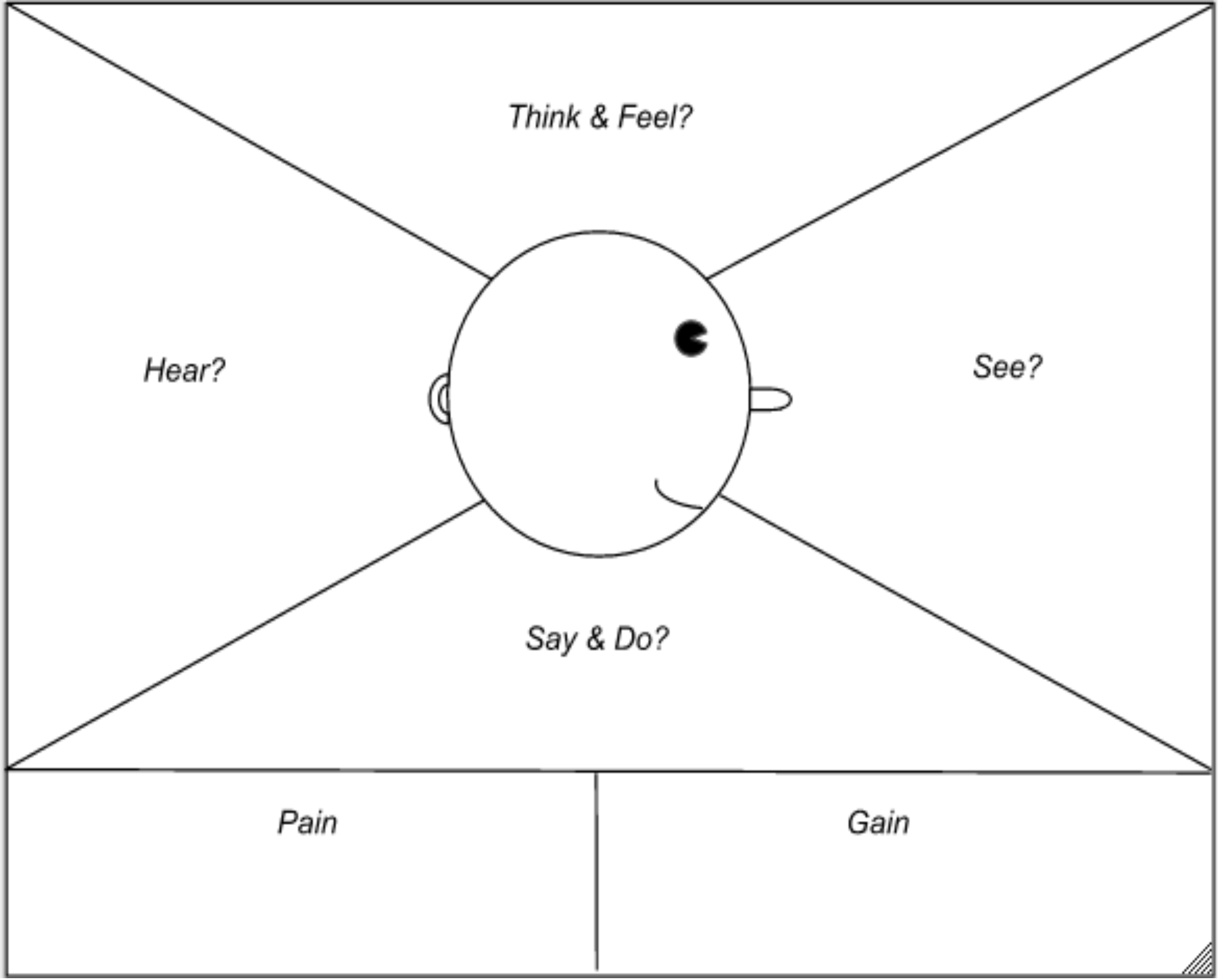A commercialization workshop was held at Tampere UAS from November 2019 to February 2020. The workshop questions were: how to develop an idea to a commercial product? How to develop a product that customers want to buy? How to create value that customers are willing to pay for?
When thinking about the commercial potential of a product, the company’s first objective is to gain understanding of its customers’ needs. It’s only on the basis of this understanding that the company is able to create and develop services that meet these needs.
When studying the customer’s needs, the company needs to have access to people’s silent and hidden thoughts and values. They may be difficult to find unless you pay special attention to them. If you ask your customer, what does he appreciate in terms of holiday and what does it take to have an enjoyable holiday, the question might be very difficult to answer. By asking about a certain holiday and the customer’s experiences on that, is already easier to answer. People tell more openly about their values when they can be linked to a certain thing or story. As the customer is not always able to tell directly about his needs when asked, the customer’s behaviour may be studied by observation, to better understand the personal motives that have an impact on his behaviour.

How values guide the customer’s motives?
The customer’s motives behind the purchase decision may include values, dreams, appreciations, conscious and subconscious needs and everyday situations. By finding out and understanding the motives, the service can be developed and improved.
To the customer, value means the ratio between the experienced benefit and cost. Value building is very personal, and the bigger the difference between the experienced benefit and the price paid for the service, the more value the customer experiences when buying the service. At the time of purchase, personal motives determine the need for which a solution is looked for.
The value of a product or a service consists of the following factors: brand and status, easiness of use, price, design, features, capability to facilitate matters, accessibility, savings, product tailoring, novelty value and reducing risk.
The better the company can satisfy the customer’s needs, the more value the company’s service offers to the customer.
The company can create added value to the customer by improving the price-experienced value ratio. The ratio may be improved by lowering the price of the product or by increasing the benefits the customer experiences.

What does a value proposition mean?
A value proposition is the company’s promise of value that its product or service produces to the customer. Value proposition signifies how much customers benefit from the company’s services or products. The customer value may be that the product or service is more effective/less expensive/more secure/faster available/easier to use/better designed or less risky than the competitors’ products. These factors can be used to create a value proposition that tells about the value the customer will experience, compared to competitors’ products.
The value proposition is in the core of any business and the cornerstone of all operations. A solid and well-designed value proposition helps everyone working in the company to do the right things and be more successful. Customers choose their preferred products and services on the basis of the value they create.
- First, think about the distinguishing factors. What distinguishes your company and your products or services from the competitor’s? Value proposition can be based on novelty, performance, customization, taking care of things, planning, brand/status, price, after sales, accessibility, usefulness or other value creating feature.
- Second, create a carefully planned set of products and services, that meet the customers’ needs, to each customer segment. Think about the customer’s problem. What is the problem that your product or service will solve?
- A combination of benefits that the company offers to its customers may be innovative or already existing, with enhanced features and qualities.
- Appeal to people’s emotions in your value proposition. Attach your customer to your value proposition by creating a story for it. Interest aroused by novelty attracts customers and adds visibility. Make sure your story arouses emotions that lead to customer loyalty.
- A value proposition may be different to different customer groups. The company may, for example, focus on the quality of products and services and, by that way, create value to its customers. For another customer group, the company can create value by fitting communication and after sales, or by an exceptional delivery chain.
A tool for building value proposition: Value Proposition Canvas
With the help of Value Proposition Canvas, the company can ensure that there are customers to its products and services on the market. The objective of the tool is to find the best possible product mix with which the company can understand what the customer wants to do with the company’s products or services. Also, it helps to recognize the benefits and sacrifices related to the product and to describe the process of creating value to the customer. You can use the tool to find out how your company’s customer segments match with your products or services.

Value Proposition Canvas can be used to develop customer understanding. It helps you understand what you have to learn about your customers and test your value proposition. With the canvas, you can develop customer understanding and put your various ideas into practice.
Value Proposition Canvas tutorial (in Finnish):
Trust is the key value to customers
Design ethnographer, service designer and service business developer, serial entrepreneur Anna Sutherland from Kolmas Persoona Oy was involved in coaching HIPPA project’s companies in the commercialization workshops organized at the turn of the years 2019–2020. In her work, Anna Sutherland combines qualitative research with storytelling and business thinking. This creates an effective understanding of the customer’s problems, wishes, appreciations – and the future potential that inspires the entire organization.
”Every organisation’s most valuable asset and raison d’être is the customer. The thing that the customer finally appreciates most, in a given product or service, sometimes surprises even a seasoned service designer,” Sutherland said.
”I remember the astonishment of a person who was responsible for the substitute system of an elderly care home when we demonstrated her Joiku of Life, the gig work and well-being community of retired elderly care workers. The customer was not impressed by the well-designed, easy-to-use booking process or the speed of finding a substitute, but the trust. “So can I really trust that if I book a substitute from you to the night shift, he or she also comes to work?” Things that you take for granted may be something that solves the customer’s biggest problem. So, taking your customers onboard your processes in a regular, continuous and genuine way, is critical to the success of your company,” Sutherland added.
Tool to recognize the customer: Empathy Map
You can understand your customer’s position with the help of Empathy Map. First of all, think about your typical customer. Give him a name, title and age. Then, try to answer the questions by putting yourself in the customer’s position. Collect data by observing, talking, asking questions and interviewing your existing customers. You can get part of the answers by asking your customers directly, and part of them by listening to and observing them.

Here’s a list of questions you can use:
- What does your customer think and feel? Try to describe what your customer thinks and feels. What does he think but doesn’t say aloud? What touches him? What keeps him awake at night? What does he dream about?
- What does your customer see around him? What kind of things does he see? Who does he see? How he is being influenced by, for example, advertising? What kind of challenges he’s faced with?
- What does your customer do and how does he behave in public? What kind of attitude he has? What does he tell to others? Is there something incoherent in his behaviour? Does he act differently from what he says?
- How the discussion themes in the environment affect your customer? What do his friends say? Who’s influencing him? Which media have an impact on his opinions?
- What does your customer worry about? What kind of obstacles he has, that he wants to overcome? What kind of risks he tries to avoid? What is he trying to achieve? How does he measure his performance? How is he going to achieve his targets?
Tips and ideas for the use of Empathy Map:
The participants of the commercialization workshops concluded that you can never think too much about your customers and the value they receive. Here’s what our participants learned during the workshops:
”You never think enough about the value your customers receive. Bear in mind that it can come from many different sectors.”
”The most important takeaway to me was to understand the meaning of marketing and to analyse the value that your product creates, from the customer’s perspective.”
”You have to finetune your value proposition and present it differently to different customers.”
This article was originally published in Finnish in HIPPA project’s blog on 9 June 2020.
WritersElina Merviö, coach, Team Leader in Entrepreneurship, Tampere UAS Proakatemia
Marika Vuorenmaa, M. Sc. In Business Administration, Y Campus Team Leader, Tampere UAS
Related content
Liini markkinointi ja idean pitchaus
Liini ajattelu jäsentää liiketoimintaa koko skaalalla liiketoimintamalleista yrityksen markkinointiin. Design Sprint on yksi työkalu, jonka avulla voi kehittää yrityksen...
Check it outKuinka idea paketoidaan helposti ostettavaksi?
Kun yrityksen liikeidea on kirkas ja arvolupaus selkeä päästään paketoimaan myytävää tuotetta. Paketointi tarkoittaa tässä yhteydessä tuotteen tai palvelun tuotteistamista, johon...
Check it outLiikeidea kirkkaaksi
Idea on alku kehittämiselle ja innostukselle. Se voi johtaa yrityksen perustamiseen tai olemassa olevan toiminnan laajentumiseen, uuteen liiketoimintamalliin,...
Check it out


